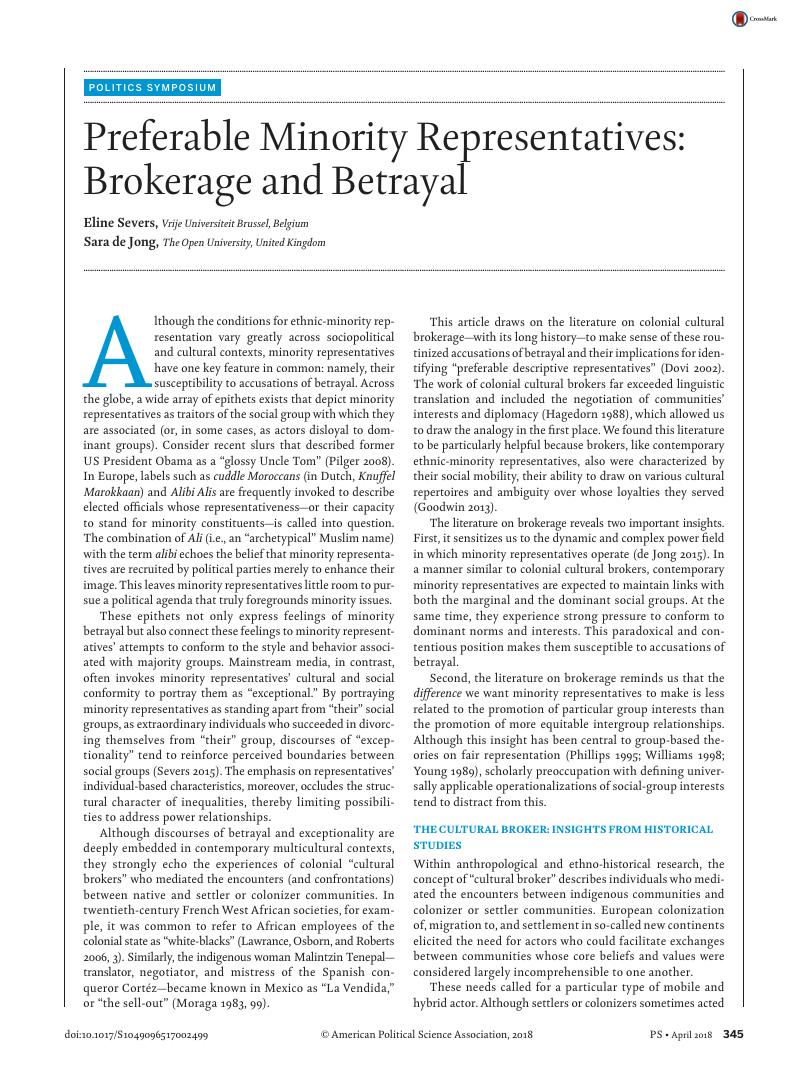Crossref Citations
This article has been cited by the following publications. This list is generated based on data provided by Crossref.
de Jong, Sara
2018.
Brokerage and transnationalism: present and past intermediaries, social mobility, and mixed loyalties.
Identities,
Vol. 25,
Issue. 5,
p.
610.
Bajpai, Rochana
2019.
What do descriptive representatives describe? Minority representative claims and the limits of shape-shifting.
Ethnicities,
Vol. 19,
Issue. 5,
p.
740.
Zevnik, Andreja
and
Russell, Andrew
2020.
Political Representation and Empowerment of Roma in Slovenia: A Case for National Reserved Representation.
Treatises and Documents, Journal of Ethnic Studies / Razprave in Gradivo, Revija za narodnostna vprašanja,
Vol. 84,
Issue. 84,
p.
51.
Tremblay, Manon
2022.
LGBQ Legislators in Canadian Politics.
p.
353.
Tremblay, Manon
2022.
LGBQ Legislators in Canadian Politics.
p.
1.
Tremblay, Manon
2022.
LGBQ Legislators in Canadian Politics.
p.
135.
Tremblay, Manon
2022.
LGBQ Legislators in Canadian Politics.
p.
251.
Minnegal, Monica
and
Dwyer, Peter D.
2022.
Capital and Inequality in Rural Papua New Guinea.
p.
101.
de Jong, Sara
Berenschot, Ward
Ehrhardt, David
and
Walton, Oliver
2023.
Agents of order? Brokerage and empowerment in development and conflict.
Journal of International Development,
Vol. 35,
Issue. 3,
p.
385.
Halevy, Nir
Chou, Eileen Y.
Levine, Emma E.
and
Schweitzer, Maurice
2025.
Brokered Distances: Trust in Brokers within and Between Organizations.
Organizational Psychology Review,
Vol. 15,
Issue. 2,
p.
156.
Droz, Laÿna
Fricke, Martin F
Heroor, Nakul
Jannel, Romaric
Komatsubara, Orika
Lagasca-Hiloma, Concordia Marie A
Matangcas, Paul Mart Jeyand J
and
Sihombing, Hesron H
2025.
Environmental philosophy in Asia: Between eco-orientalism and ecological nationalisms.
Environmental Values,
Vol. 34,
Issue. 1,
p.
84.



